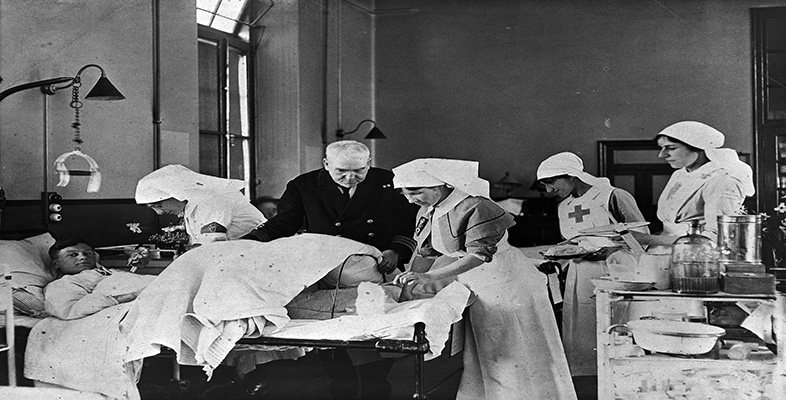4.3 Social factors in the growth of the asylum: social control, the family and the asylum
Both contemporary commentators and historians have argued that the pressures of capitalism resulted in families being not only less capable of supporting family members but also less tolerant of unruly behaviour. In Scull's phrase, the asylum became a dumping ground for ‘inconvenient people’. It is clear from contemporary admission documents, including private correspondence and diaries, that caring for a mentally ill relative put all sorts of emotional strains on families. Many strove in vain to keep the problem within doors. They struggled to cope with the verbal incongruities and indiscretions of people with florid delusions, or with the often frightening and wearing behavioural anomalies of those who were destructive, violent, despondent and self-harming. Most felt the strain of dealing with the associated problems of compromised working lives and interrupted sleep. Most admission records dwell on the troublesome, bizarre and traumatic nature of the behaviour of the mentally disordered. Such behaviour was likely to bring the insane into contact with the police and other authorities engaged in maintaining good social order. This is the basis of another explanation for the growth of asylums: that these institutions were used for the social control of deviancy. This thesis sees the asylum as an instrument for the (bourgeois) establishment of norms and social order, via the incarceration of those defined as socially, morally, politico-religiously and physically deviant and dangerous (Doerner, [1969] 1981; Goffman, [1961] 1990; Rothman, 1971). Ireland, where the insane and mentally disabled were confined (and conflated with the criminal) in accordance with the Dangerous Lunatics Act 1838, seems to provide particular evidence for the intensification of representations of insanity as ‘dangerous in this period’ (Walsh, 1999).
So were asylums geared to dealing with Scull's ‘inconvenient people’ or were they about confining disorderly persons who threatened bourgeois property and livelihoods? John Walton has made a detailed study of admissions to Lancaster County Asylum which presents some useful evidence for deciding between these two viewpoints.
Exercise 5
Read ‘Getting rid of “inconvenient people”? [Tip: hold Ctrl and click a link to open it in a new tab. (Hide tip)] ’.
- What does Walton conclude about the reasons for admission of persons to the Lancaster Asylum?
- How does his work challenge the claims made by Scull?
Discussion
- Walton dismisses the idea that the asylum is used in any systematic way to deal with the ‘disorderly poor’ – although a small number of asylum admissions did come through the law courts. He also finds little substantial evidence that asylums served the function of quelling political or religious dissent: only a handful of patients seem to have been admitted on such grounds without other signs of mental disorder. He suggests that the machinery of asylum admission was simply too complex to make it an effective method of social control.
- Walton argues that people admitted to the asylum were not the ‘inconvenient people’ of the Scull thesis but were, rather, ‘impossible people’. Drink and violence, especially violence towards other family members, as well as deep depression and suicidal behaviour figured in over half of the admissions. There is little evidence that any failure to contribute to family income was a reason for incarceration. Walton argues that families did not dump their relatives in the asylum: institutional care was a last, not a first, resort. Family bonds and social networks were resilient under the pressures of hardship and destitution.
Other studies back up Walton's conclusions by showing that the police were rarely involved in committing lunatics. My study of Gartnavel Royal Hospital (Glasgow Lunatic Asylum) reveals that as many as 10 per cent of committals had some kind of police involvement, but that a large proportion of these patients came voluntarily to police stations, or exhibited highly delusive, dangerous or disruptive forms of behaviour. Others were sent to asylums at the behest of their families after getting into trouble (often repeatedly) with the police. Such findings do not entirely fit with the idea of close social control through intensified policing of Victorian societies.
There seems no doubt that, as Walton puts it, ‘the roots of most asylum committals clearly lay in domestic troubles, as families at the end of their tether sought succour even though it meant the Poor Law and the asylum’ (Walton, 1985, p.139). Does this mean that we should accept the views of contemporary commentators that families' increased willingness to confine individuals was the result of the availability of asylum accommodation? Was the growth of the asylum a result of the supply of places, or a real demand for such care? Given Walton's argument that families did look after mentally ill relations until the situation became difficult or even dangerous, and the way in which asylums were constantly forced either to expand, to rebuild or to refuse large numbers of applicants, the answer seems to be that there was a genuine demand for places, and not that working-class families were cynically exploiting a resource to deal with awkward family members. Almost invariably, the number of applicants exceeded the available accommodation, and the mounting waiting lists for admission suggest that the demand increased ahead of supply.
